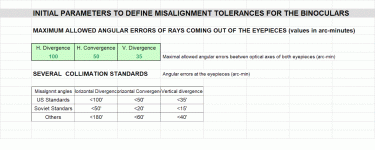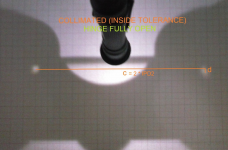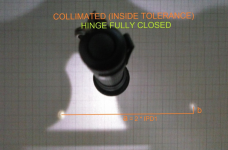Last week I sold a Maven B6 12x50 to a gentleman on another forum. I had spent maybe 6 hours total behind the binoculars with them tripod mounted before I sold them. I never noticed any eye strain. He contacted me after being able to use them and informed me that he thought the alignment of the barrels was off. He explained the common powerline test you can use to check for this, which I had never done before. I offered to take them back so he wouldn't have to deal with the hassle of warranty service, and they are on their way back to me right now.
This led me to check my new B1.2 8x42. I set them up on a tripod, focused on a powerline about 300 yards away, and backed away slowly until I could see through both barrels individually. Sure enough, there was a vertical gap in the powerline from one barrel to the other. I just filled out the warranty paperwork and will be sending them in. I did the same test on my roommate's C1 8x42 and the effect was still there, but much smaller.
I have a few questions for those with way more optics knowledge than me:
1) Is this a big deal?
2) Is it this common for basically new binoculars in this price range to have this issue, or did I just get particularly unlucky?
This led me to check my new B1.2 8x42. I set them up on a tripod, focused on a powerline about 300 yards away, and backed away slowly until I could see through both barrels individually. Sure enough, there was a vertical gap in the powerline from one barrel to the other. I just filled out the warranty paperwork and will be sending them in. I did the same test on my roommate's C1 8x42 and the effect was still there, but much smaller.
I have a few questions for those with way more optics knowledge than me:
1) Is this a big deal?
2) Is it this common for basically new binoculars in this price range to have this issue, or did I just get particularly unlucky?










